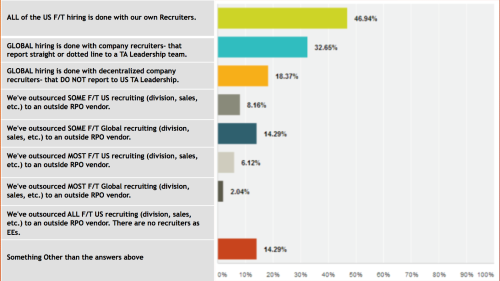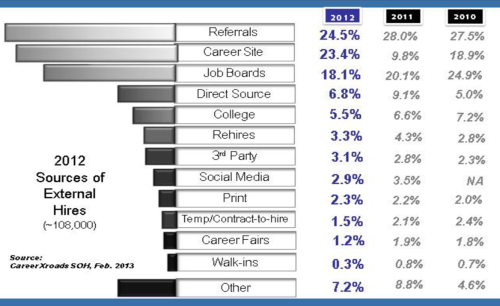
A recent SmashFly publication, the SmashFly Recruitment Marketing Report Card for the 2016 Fortune 500, came across my desk a couple of weeks ago. And if you’re involved at all in recruiting talent, you’ll find it interesting.
It’s easy to assume that the Fortune 500 are among the most effective recruitment marketers out there. But if you made that assumption, you’d be wrong! This report card is pretty interesting. SmashFly, the recruitment marketing automation software company, has pulled together some fascinating information and graded some of the most well-known employers in the U.S. on their recruitment marketing. It’s pretty fascinating stuff.
In addition to grading each of the employers – by the way, only 4% of the 500 received an A! – this analysis also provides an abundance of good and best practice examples from some of the most admired companies around. The three categories that caught my attention were Best Practices, Emerging Practices, and Untapped Practices.
The Untapped (used by less than 20% of the Fortune 500) Practices are fascinating:
SmashFly points out that 20% of the Fortune 500 send regular communication to leads – but only 1% send content other than job alerts. The opportunity to build lasting relationships by sending other types of content – like company news, employee stories, and other valuable subjects – exists for all employers. An obvious quick win would be to automatically send email reminders to candidates who haven’t completed their applications. This simple automated outreach can enable a 15% increase in job applications!
The opportunities for greater recruitment success seem obvious, and include some of these:
- Fortune 500 employers are doing well with SEO, but 51% (!) don’t optimize their job landing pages
- 48% of the Fortune 500 never send an email to leads in their database after the initial confirmation email
- Referral calls-to-action on job descriptions are under-utilized, missing big opportunities to drive referrals from both employees and candidates
- Only 14% of Fortune 500 employers have a blog or other resources about their application processes
Examples of effective recruitment branding from employers that are highlighted in the report include companies like Exxon Mobil, Intel, Lockheed Martin, Thermo Fisher Scientific, Pepsico, HP, Marriott International, and Comcast.
This report contains recommendations that you can begin to implement today to increase your recruitment marketing success. You may not have the budget of a Fortune 500 recruitment department, but you can certainly begin to adopt best and untapped practices to become more effective and to have a wider choice of talent.


















